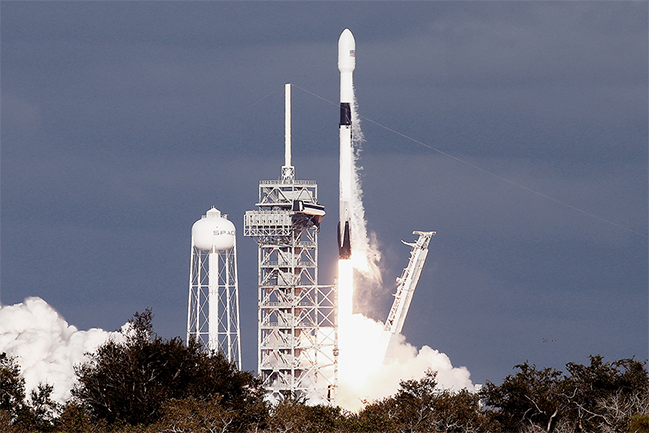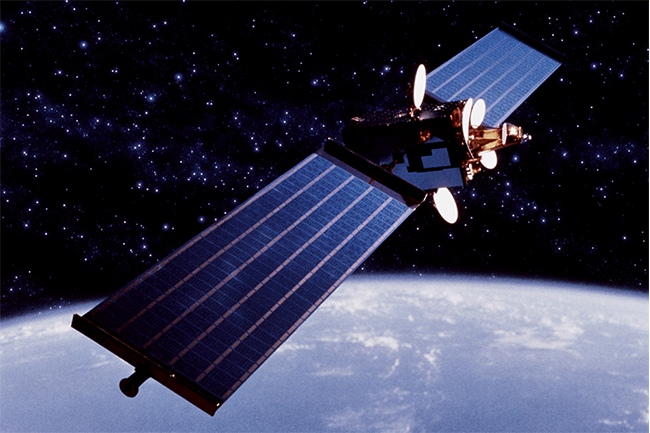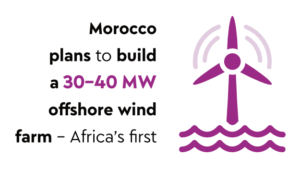The desert steppe of Baikonur, 200 km east of Kazakhstan’s remote Aral Sea, seems an odd place to start a conversation about Angolan mobile-phone users. But in mid-October 2022, that’s all anybody was talking about at the Baikonur Cosmodrome. The facility was the launch site of Angosat-2, Angola’s second communications satellite – and the fifth African satellite to go into orbit in 2022 alone.
Africa’s first-ever satellite was South Africa’s SunSat-1, a 64 kg unit built by a group of postgrad engineers at the University of Stellenbosch. They launched it in 1999 and lost connection with it two years later. But SunSat-1 dragged Africa into the satellite age, with the continent launching 21 satellites between 1999 and 2016. Then came the boom. In the seven years since then, African countries have – according to the global non-profit Space Generation Advisory Council’s count – sent a further 30 satellites into orbit, including Uganda’s PearlAfricaSat-1 and Zimbabwe’s ZimSat-1, which were scheduled to leave Earth in early November 2022.
Euroconsult expects the global industry to build and launch some 17 000 satellites over the next decade, representing a fourfold increase over the past decade. Across the world and throughout Africa, the satellite industry is – quite literally – blasting off.

Yet you wouldn’t say so. Apart from the usual hype around SpaceX’s Starlink constellation (which perhaps has more to do with founder Elon Musk’s self-promotion), satellite technology tends to fly under the news radar.
‘The story is unfolding in the sky,’ says Dawie de Wet, group CEO of Q-KON and chief engineer for Southern African-supported satellite broadband service Twoobii. ‘Satellite internet technology is probably in year three of a five-year plan, but that’s not so visible here on the ground. If you build a fibre network, everybody sees trucks and pavements being dug up as the fibre is deployed. But if you build a satellite network, nobody sees it. The industry is in that space right now – satellite networks are being built, but not visibly and not by local entities, so there’s low awareness of it,’ he says. Compared to the more mainstream fibre and mobile telecoms sectors, the satellite industry remains a specialised market. Until recently it was primarily used by governments and broadcasters, with performance and cost limiting its role in the wider telecoms industry.
‘Satellite has a reputation of being slow and expensive. Whenever you talk about the technology you get those complaints. But that’s changed. We’re soon going to see satellite links offering gigabits-per-second capacity, breaking the box that the technology has been put into,’ he says.
De Wet emphasises that current satellite technology is neither better nor cheaper than fibre or fixed wireless … but it is different.
As Musk himself said at the Satellite 2020 conference, ‘Starlink is not some huge threat to telcos. I want to be super clear: it is not’. Rather, Musk explained, satellite tech could be helpful to telcos by serving populations that are not well covered by cell towers, copper or fibre. ‘5G is great for high-density situations, but it’s actually not great for the countryside; you know, for rural areas. It’s not great. You need range. And so in any kind of sparse environment, 5G is really not well suited.’

In other words, a middle-of-nowhere spot like Kazakhstan’s Cosmodrome is the perfect place to start a conversation about African telecoms. Vaibhav Magow, VP of the international division at global satellite provider Hughes, agrees. ‘Satellite has been, and continues to be, essential to the effort to close the significant connectivity gap in Africa,’ says Magow, pointing to research from ABI which found an estimated market potential of about 47.8 million households for fixed satellite broadband in the Middle East and Africa region in 2020. That figure is expected to increase to more than 54 million households by 2026.
‘However, the fact is that more users access the internet with a mobile device than a fixed service, making mobile network operators the leading providers of internet connectivity in Africa,’ says Magow.
‘Satellite backhaul plays a central role in helping those operators expand their network reach and their coverage areas. This is especially true as regulators in developing nations require mobile operators to connect the most rural and remote citizens as part of universal service obligations that come with their spectrum licences.
‘Satellites are the fastest, most efficient way to extend internet access to remote and rural places that are beyond the reach of cable and fibre services. And when businesses and communities are connected, they gain access to new opportunities for education, commerce and social services.’

In large parts of sub-Saharan Africa, access to those connections remain a challenge. Despite the surge in internet usage during the COVID-19 pandemic, the GSMA found that ‘more than half of the population [in the region] is still not using mobile internet, despite living in an area with mobile broadband coverage’.
Why the gap? ‘Affordability is one reason, and it’s one that can be addressed with satellite connectivity,’ says Magow. To his point, UAE-based satellite solutions provider Yahsat, through its Hughes-powered subsidiary YahClick, recently partnered with independent aerial fibre-optic provider Phase3 Telecom to bring world-class high-speed, low-latency satellite broadband services to Nigeria’s un- and underserved communities.
Yahsat clearly sees an opportunity for growth in Africa. Last year it generated US$15 million (3.7% of its total revenue) from the continent – a 63.8% increase year on year.

‘Remember what happened when the GSM market was formed,’ says De Wet. ‘Back in 1993/94 there was no MTN, no Vodacom. Telkom at the time didn’t think the technology was going to fly. There was a lot of negativity. “How can we build this technology?”; “It’s not going to help Africa…”; “We’re wasting money…”. That was the debate. But GSM created a new industry of manufacturing, service providers, regulatory, distribution…
‘I think we’re going to see the same now in the satellite industry. The fixed-line guys aren’t interested. Neither are the mobile guys. We’ll see a new industry stepping into that gap, and then we’ll have a whole new dynamic, just like we have in cellular.’
When satellite players such as Q-KON, Twoobii, Hughes and Yahsat look at Africa, they see a continent with huge connectivity gaps – gaps that their technology can fill.
















